Anyway, if you haven't done this before it's really not all that difficult to get to the P/S pump itself. The first thing I did was drain the fluid from the reservoir tank (used a universal fluid pump), take off the two bolts, and remove it. Next, I removed the pulley. I kind of wedged a socket wrench in there to keep it from moving, while breaking loose the nut on the frontside of the pulley. After that, you can easily remove the 3 bolts holding the pump onto the mounting bracket - this is what you're left with.
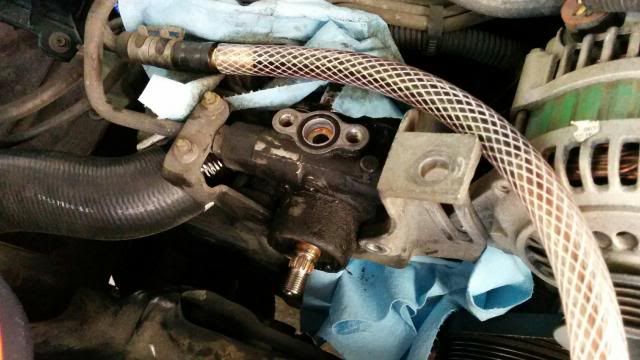
As you can see above, I've got a hose connected to the return line. I did this to drain the extra fluid, it's not really necessary. If you want to do it, just spin the pump pulley clockwise by hand and most of the remaining fluid will come out from the lines.
This is that filthy little pump removed from the mounting bracket.
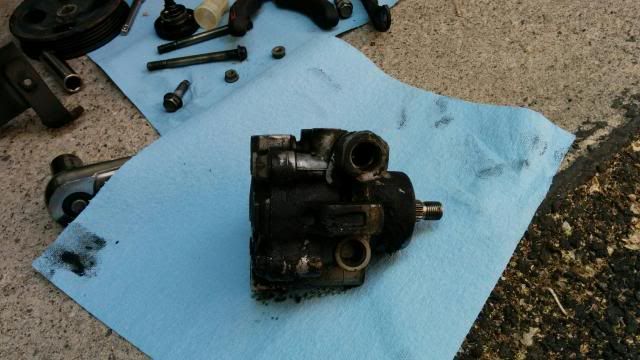
The housing is held on by 4 bolts. Before getting into it, I cleaned it up a bit. The pump itself is relatively simple, but there are some small bits you want to keep exceptionally clean.
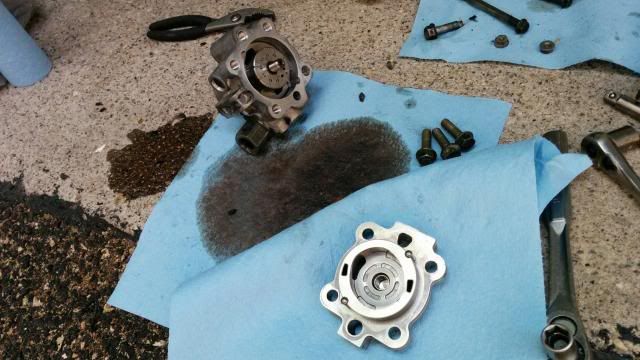
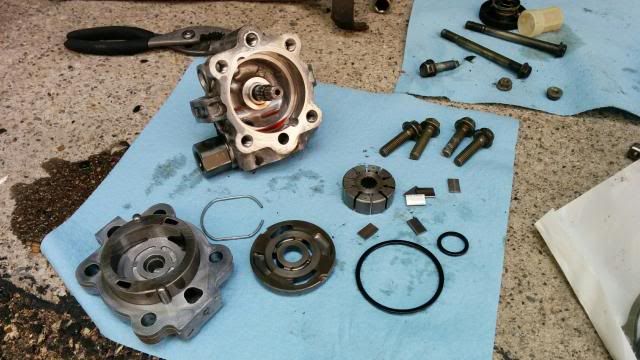
Now, notice that the pump shaft is still installed in the housing. This is pressed in via the bearing on the front of the housing. It can be removed simply by using a small amount of heat. I used a cheap propane torch you can buy at WalMart for like 5 bucks. Apply a SMALL amount of heat around the exterior of the housing, around the front where the bearing is. It shouldn't take any more than a minute of heat - afterwords, use a hammer and gently tap out the shaft from the front/bearing side. Here it is, removed. Note that the bearing is still pressed onto the shaft - I wanted to keep it there. The second picture shows the shaft oil seal removed along with everything mostly cleaned up.
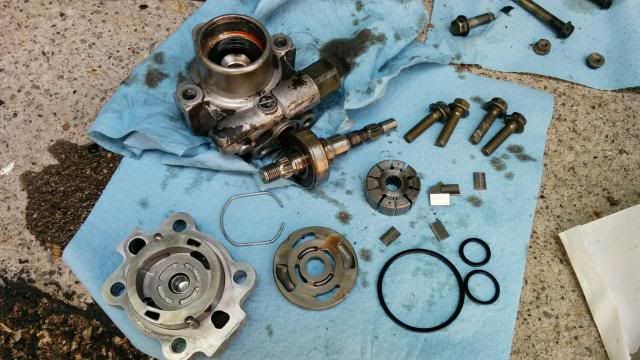
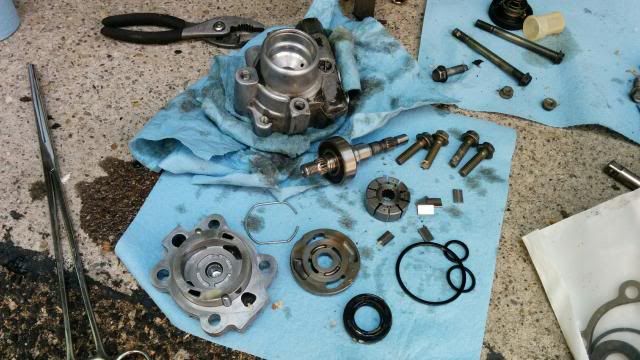
I got my pump seal kit from rockauto.com, and it comes with everything you need - EXCEPT for 1 o-ring that is the wrong size. Seems to be the same with wherever you get the seal kit. *shrug* Anyway, installation is reverse of removal. Simply press in the shaft oil seal with your hands, you may need a large socket to help get it in all the way. Next up, don't forget to put a small amount of grease along the inner lip of the seal. This is what I used.
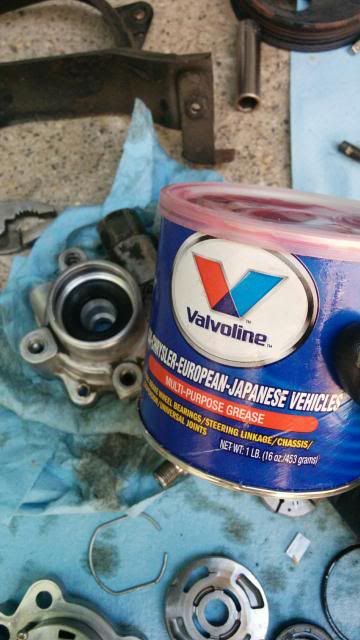
To get the shaft back in, do what you did to remove it. Heat up the outside of the housing around where the bearing presses in, when it's nice and warm GENTLY tap in the shaft with your hammer. It really doesn't need much. If it's not moving with gentle hammering, you may need to warm it up again.
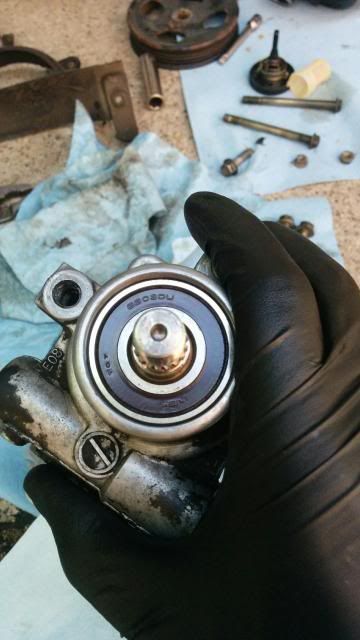
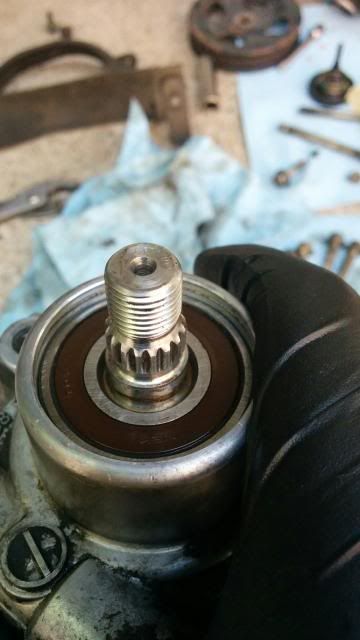
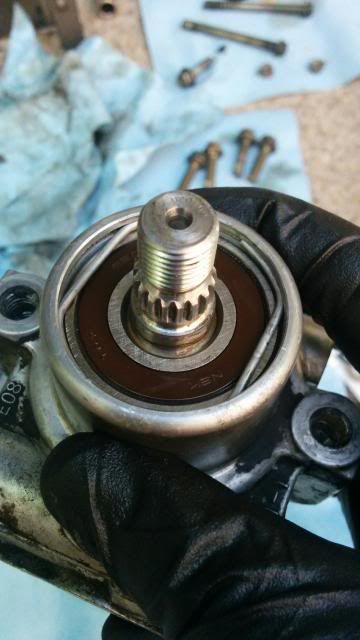
Everything is stacked in the opposite way you took it out. In with the new seals!

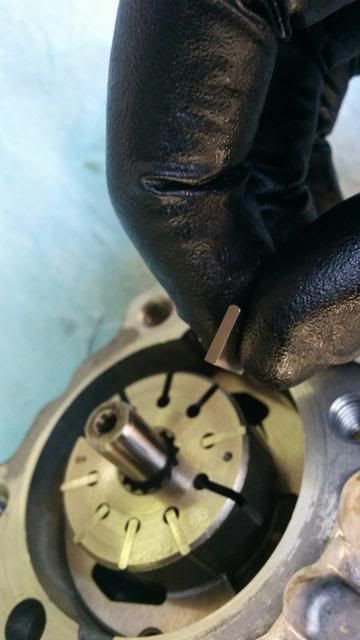
(make sure these dowel holes/divots are lined up, or else you won't be able to fit it together, also the metal tabs/fins should be pushed in all the way)

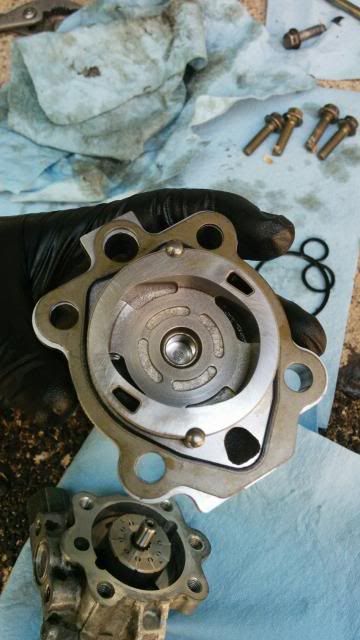
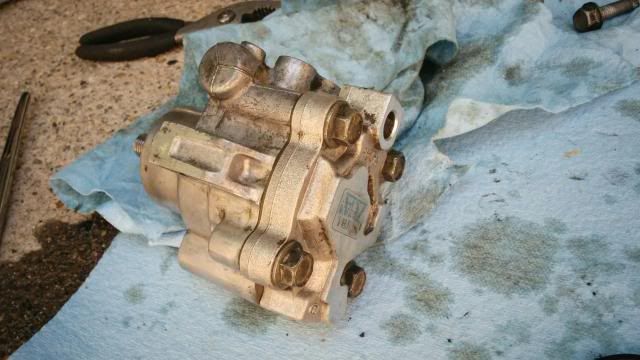
And here it is, back on the mounting bracket, almost ready to flush/replace the fluid.
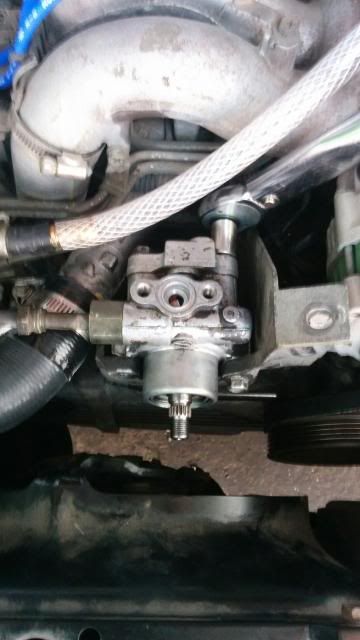
Now, since the kit comes with the wrong sized O-ring, I bought one of these from Autozone. It's got one that fits (roughly) the seal around the reservoir tank.
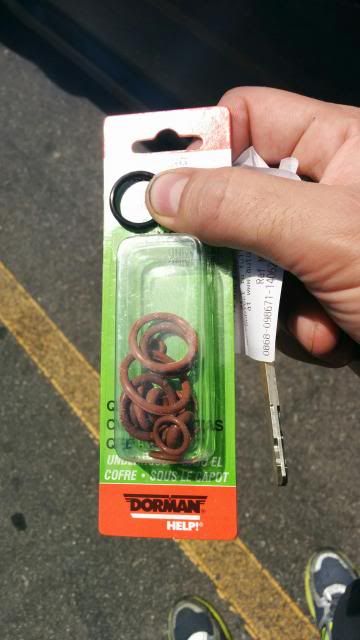
Now, I decided to keep the return line connected to my hose + drain bucket. I wanted to flush the system with new fluid. It was very tedious to install the reservoir tank while having the return hose plugged into this tube, but it's doable if you loosen the fuel rail on the passenger side bank. Also, I used an old fuel hose to plug into the reservoir tank return fitting to prevent the new fluid from escaping each time I refilled the tank.
Next up, reinstall the pulley. Did what I did to remove it, just opposite.
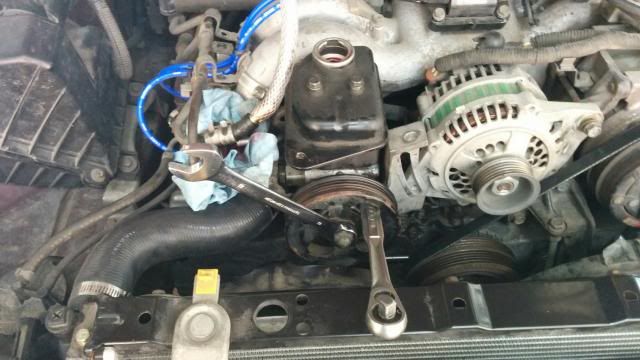
With the belt installed, I'm ready to start cranking the pump with the engine. HOWEVER, I don't want the engine to idle/run, as it will be too fast. In order to keep the pump spinning nice and slowly, I disconnected the fuel injector clips so they wouldn't spray, THEN cranked it. (Make sure the fluid reservoir is constantly full!)
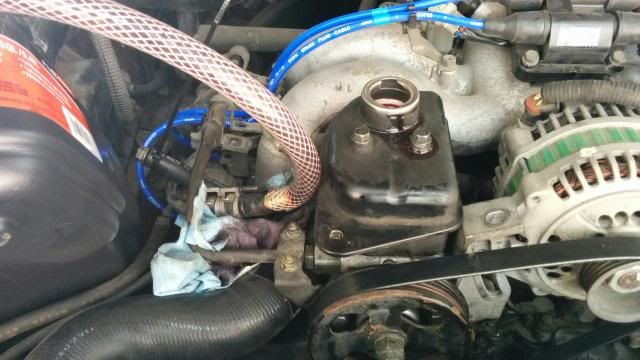
(You can see the ATF fluid running through the line)
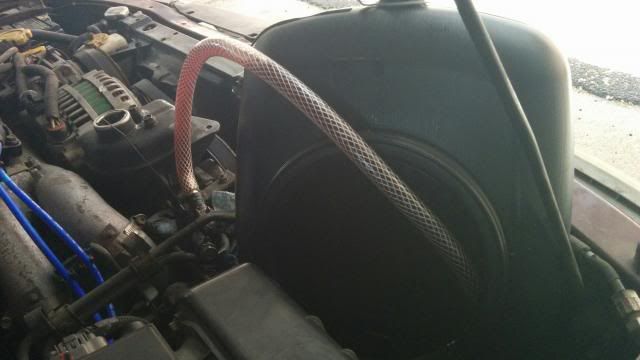
I cranked it for a few seconds at a time, a couple times I turned the steering wheel while cranking it. When the fluid coming out was clear (didn't take long) I did it just a couple more times then called it good.
Reinstalled everything back to normal, and started her up.

I made sure the fluid in the tank was full, let it idle for a few minutes, then went to turning the steering wheel slowly back and forth. I did that for a few cycles, turned it off, then re-checked the fluid level. Perfect. I then took it for a test drive and I actually noticed a difference! It turns a little bit smoother now, and it's even quieter than before (it wasn't loud to begin with) - I attribute this to the new ATF fluid. I double checked for leaks while it was running, and it looks bone dry now. Very nice!
Anyway, hope this helps anyone who is looking to do the same thing.

